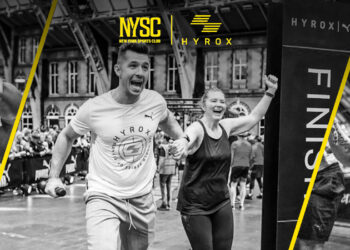The season for golf is upon us, and golfers are looking for any way to improve their game. Over the last five years professional golfers such as Tiger Woods and David Duval have found Pilates to be a great tool for improving their game.
The benefits of Pilates exercise to the golfer are evident in the basic principles of Pilates developed by Joseph Pilates in the early 1900s. Ironically, these principles are ingrained in the essentials of the golf swing.
The first principle of Pilates is concentration. Pilates stated that each exercise needed to be correctly executed and mastered to the point of subconscious reaction. Pilates directs the exerciser “to concentrate on the correct movements each time you exercise.” This coincides with the essentials of the golf swing, supporting the idea that a golfer needs to be able to reproduce the same swing over and over. Many golf pros use the acronym “perfect practice makes perfect.” Focus is also a factor that can make or break a golf game, and it is said, “Whatever it is that we focus on, we get more of it.”
We can only effectively focus on one thing at a time and practicing Pilates is practicing the ability to focus – especially on the movements and actions of your body. The Pilates principle of control addresses this as Pilates exercises start with mind control over muscles. “Ideally our muscles should obey our will. “Reasonably, our will should not be dominated by the reflex actions of our muscles,” stated Joe Pilates.
Another principle of Pilates is flow. Pilates wrote, “Pilates was conceived to limber and stretch the muscles and ligaments; so that your body will be as supple as that of a cat.” It takes only 1.5 seconds to complete a golf swing. The swing needs to be smooth, relaxed, and subconscious. From the waggle to the ball contact, this is a necessary skill that Pilates can create.
One of the most important principles of Pilates is breath. Each movement is tied to the breath – a full inhalation and forced exhalation is practiced. For the golfer, the breath dictates the ability to relax, to concentrate, and to deliver fuel to the muscles. Practicing breath with Pilates exercise will make it a subconscious effort during the golf swing.
This ties directly into the Pilates principle of relaxation – which Pilates described as the ability to move without tenseness.
The Pilates principles of precision and stamina support the golf essentials of posture and alignment which rely on a balanced posture for an effective swing. Good alignment permits proper aim and therefore, consistency. Pilates exercises are precisely done with attention to alignment and form to create muscle balance and good posture. Pilates wrote, “Do not sacrifice knowledge to speed.” Attention is given to the smallest detail of each movement, and this is good practice for kinesthetic awareness during the golf swing. This is a key to consistency that will improve golf performance.
Torso strength and stability as well as flexibility are important components of the golf swing and these are practiced in the Pilates principle of centering. Pilates believed that all movement came from a stable center and his exercises teach proximal stability with distal mobility. He called the rectangular area between the shoulders and the hips the powerhouse. A strong torso and a large back swing with a stable lower body are key to a long, controlled golf shot. These conditioning tools are prevalent in the Pilates repertoire, where the powerhouse is the stable center that controls the movement.
Pilates exercises can be performed on eight different apparatus as well as on a mat. The benefits are achieved easily and more quickly with the assistance of a well-trained Pilates instructor, however even just a few exercises can enhance your golf game. Below is an example of a Pilates mat exercise that is of great benefit to the golfer. Give it a try!
Pilates Mat Exercise: Mermaid
• Benefits: Improved hip rotation that will enhance the size and power of the golf swing. Improved lateral trunk flexion and oblique strength that will increase core strength. Mermaid creates disassociation of motion at the hip and trunk. This will break down the components of the golf swing for detailed correction.
• Set Up: Sit on a mat with one leg crossed in front of you and one leg crossed behind you. Lean over to the side of the front leg and rest your elbow on the floor. Reach the other arm up and over your head to the side and bend your trunk.
• Movement: Inhale to prepare and then exhale as you reach up with your top arm to pull up from the floor. Do not push with the bottom arm. Inhale in the seated position and exhale as you lean over to the opposite leg to stretch into a side bend. Repeat eight times, and then change sides.
Christine Romani-Ruby is a Physical Therapist and Pilates Instructor and the Founder of Phi Pilates. Visit www.phipilates.com to pick up the Pilates for Athletes DVD designed to improve your golf game and give you great ideas for programming for your golfing clients!








